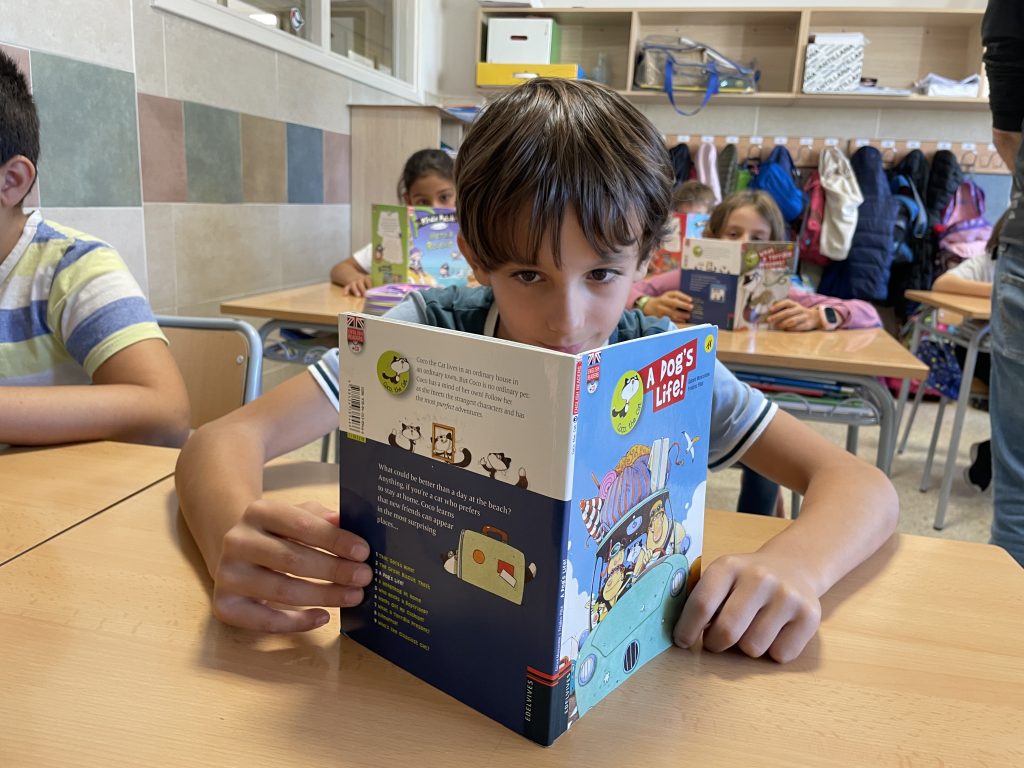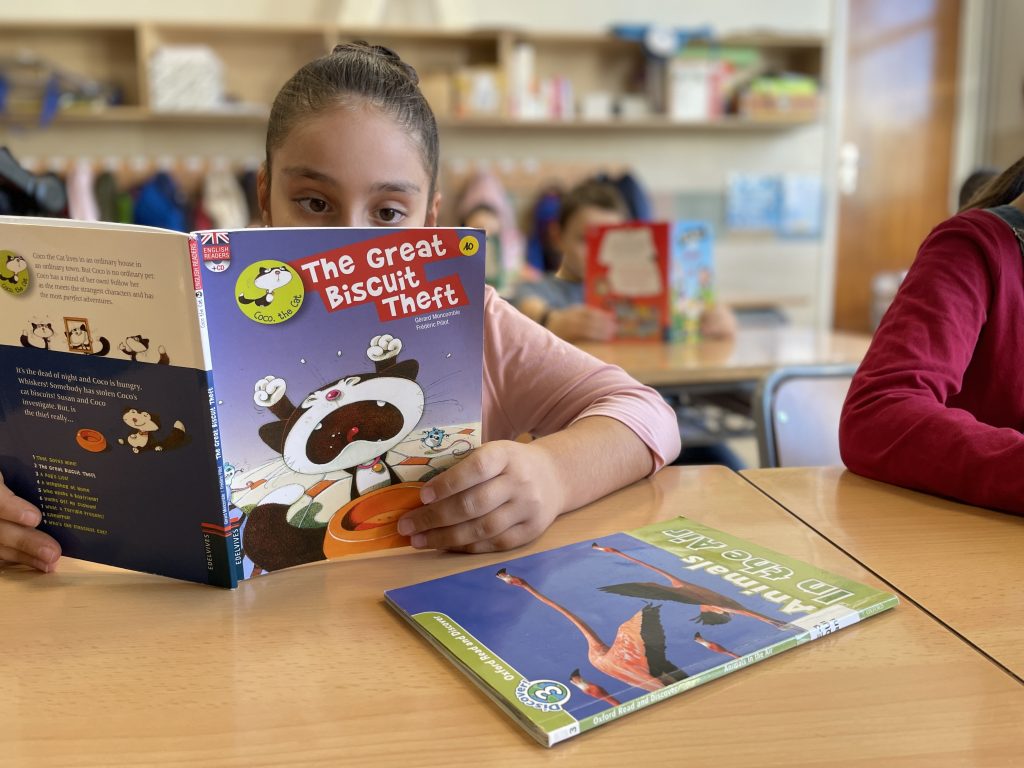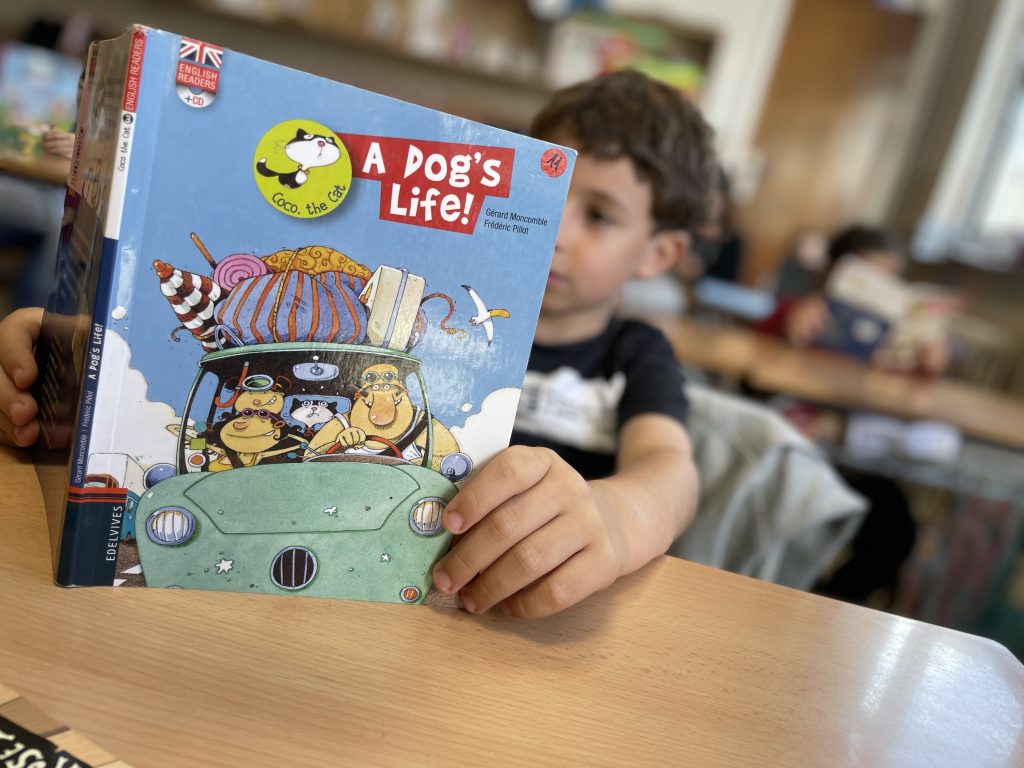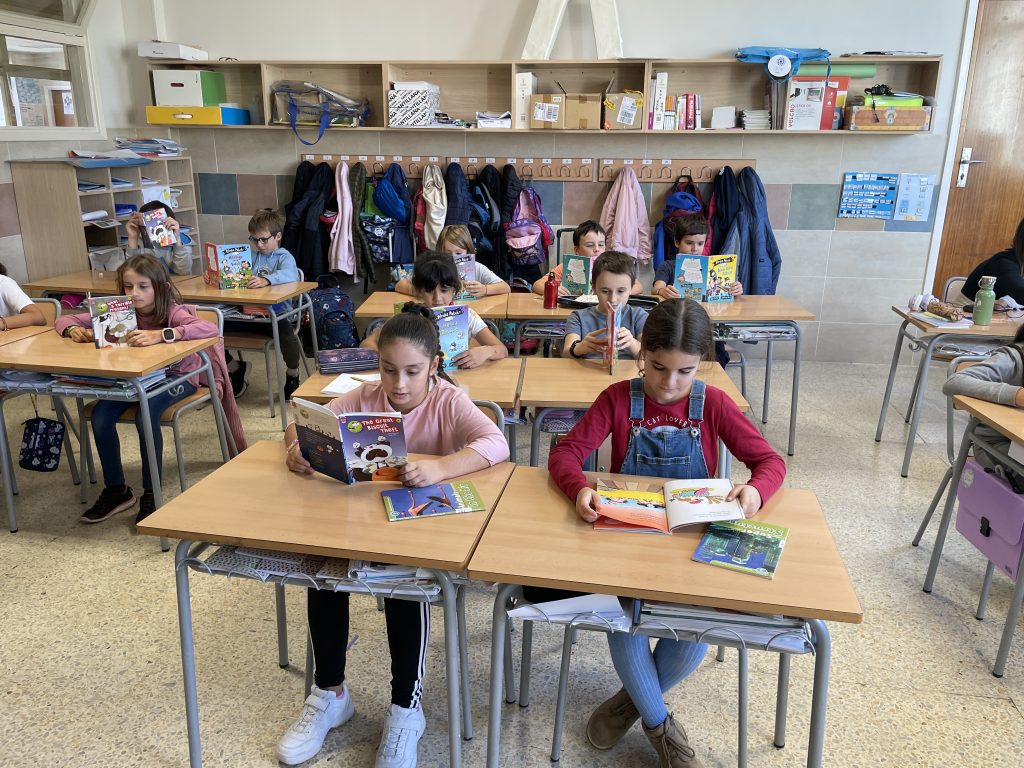Through this project we want to promote reading in English among our pupils. It is a classroom library in which each child is given a book every 2 weeks. They have to read the book and complete a reading-related worksheet.
The objectives, by levels, are as follows:
1st and 2nd grade Primary School
At this stage, the first steps are taken towards the acquisition of reading competence. They begin with the identification of phonemes to end with the reading of the word and thus begin to develop “phonological awareness” so that reading becomes a good mechanic.
- Generate enthusiasm and interest in reading with different texts (stories, rhymes, etc.).
- Expand reading comprehension and vocabulary.
- To be able to tell a short story after listening to or reading it.
- To encourage the use of the classroom library.
3rd and 4th grade Primary School
At this stage we work mainly on reading technique (intonation, speed, rhythm) and comprehension. To this end, a choice is made between different types of stories (adventure, fiction, horror, etc.), each of which follows the preferred line and in this way the aim is to encourage the habit of reading.
- Improving reading pronunciation, intonation, speed and rhythm.
- Improving reading comprehension.
- Expansion of the dictionary.
- Becoming aware of the structures of the texts (initial situation, plot, outline) and of the general idea.
- Classification of characters according to their importance (protagonist, secondary, etc.). Initiate the use of the dictionary.
- Encourage the use of the classroom and school library.
5th and 6th grade Primary School
In this cycle we work especially on comprehension. In fact, the pupil has already mastered the technique of reading and more importance is given to identifying the message, structure and type of text.
The student will be able to:
- Use the appropriate pronunciation, intonation, speed and rhythm in reading.
- Achieving reading comprehension.
- Extending the dictionary.
- Awareness of the structure of texts.
- Identifying different types of texts.
- Differentiating between main and secondary ideas in a text.
- Encouraging the systematic use of vocabulary.
- Encouraging the use of the school library.




